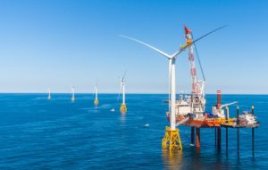As the United States seeks to transition towards a more sustainable energy future, offshore wind power has emerged as a promising solution. A recent study sheds light on the varying economic value that this renewable resource holds along the U.S. East Coast, highlighting both its potential and challenges.
A Multifaceted Evaluation of Offshore Wind’s Value
This comprehensive research delves into the intricate factors that influence the economic viability of offshore wind projects across different regions. By analyzing variables such as wind resources, electricity prices, and market conditions, it provides valuable insights for policymakers and investors alike.
One key finding is that while some areas exhibit high wind speeds ideal for harnessing clean energy efficiently, they may face lower electricity demand or limited transmission infrastructure. Conversely, regions with higher population densities and greater energy consumption might have less favorable wind conditions but offer significant market opportunities.
Moreover, this study emphasizes how local context plays a crucial role in determining offshore wind’s value. Factors like proximity to major cities or existing energy infrastructure can significantly impact project costs and overall profitability. Understanding these nuances allows stakeholders to make informed decisions regarding investment allocation and policy formulation.
Promoting Regional Collaboration for Maximum Benefit
In light of these findings, fostering collaboration among states along the Eastern Seaboard becomes imperative to maximize offshore wind’s potential benefits. By sharing knowledge and resources across borders, neighboring states can collectively address challenges related to grid integration or environmental impacts while capitalizing on their unique strengths.
Furthermore, regional cooperation enables economies of scale in manufacturing components necessary for offshore wind installations. Establishing supply chains within close proximity reduces transportation costs and supports local job creation—a vital aspect given my own working-class upbringing—while also bolstering the overall competitiveness of the U.S. offshore wind industry.
Additionally, this research underscores the importance of aligning policies and regulations across states to create a consistent framework for developers and investors. Streamlining permitting processes, standardizing environmental assessments, and harmonizing grid connection requirements can reduce uncertainties and attract more private capital into this burgeoning sector.
A Bright Future Awaits
In conclusion, this study highlights that offshore wind power possesses immense economic potential along the U.S. East Coast but requires careful consideration of regional variations in order to fully harness its benefits. By recognizing the diverse factors influencing project viability and promoting collaboration among neighboring states, we can pave the way for a sustainable energy future while fostering economic growth and job opportunities for working-class communities like my own.
